Shutter Island So Tell Me Again
Things You Merely Detect In Shutter Island Afterwards Watching Information technology More Than One time
Released in 2010, "Shutter Island" remains 1 of the strangest entries in Martin Scorsese'due south expansive filmography. After a string of dramas, Scorsese teamed upwardly with frequent partner Leonardo DiCaprio to make a neo-noir psychological thriller based on the novel past Dennis Lehane. Scorsese had been of great aid in DiCaprio'due south transformation from a child star to an acclaimed adult actor, and Shutter Island was another winning entry on their list of collaborations.
Every bit for the plot, the movie follows two U.S. marshals, Edward "Teddy" Daniels (DiCaprio) and his new partner, Chuck Aule (Marking Ruffalo), who are called to a infirmary for the criminally insane. Named Ashecliffe, the institution is located on a remote isle, ane where the marshals are investigating the disappearance of a mentally disturbed patient named Rachel Solando (Emily Mortimer) who vanished under mysterious circumstances. Simply Daniels quickly becomes aware of strange forces at work in the infirmary, leading him to suspect the staff, the patients, and even Chuck. And amidst this atmosphere of paranoia, at that place's an fifty-fifty deeper mystery surrounding the identity of a homo named Andrew Laeddis, who Daniels is secretly after.
Cheers to its twisty nature, "Shutter Island" belongs to a rare group of films that you can watch over again and again and detect something new each time. And if you lot want to dig fifty-fifty deeper into Ashecliffe's mysteries, here are some details you might've missed the first time you lot watched the film. (Be warned — there are spoilers alee.)
The opening music references The Shining
While crafting the creepy world of Ashecliffe, Martin Scorsese knew information technology would be primal to select the right music in lodge to create the required tone and atmosphere. And as "Shutter Isle" begins, cinephiles with a sharp ear for music might feel a callback to ane of the greatest horror films ever made, Stanley Kubrick's "The Shining." That's because the start of "Shutter Island" makes use of an eerie song by avant-garde composer György Ligeti, one named "Lontano", which featured in "The Shining" during several tense moments.
Clearly, Scorsese wanted to brand it clear to his audience right from the start that this wasn't going to exist one of his usual dramas but instead a film that was a piddling bit closer to the horror genre than "Goodfellas" or "Raging Bull." And as the movie progresses, information technology skillfully uses more creepy compositions to make the audience a office of Daniels' descent into madness and paranoia.
The callback to a existent-life serial killer
The hospital that Daniels and his partner are called to investigate is filled with disturbed individuals who've all committed serious crimes of 1 nature or another. Although the audience doesn't spend a lot of time with most of the criminals, we do hear i of the inmates housed in Complex C whisper a specially spooky line: "End me before I kill more."
While the line is disturbing enough on its ain, what makes the whole thing even more ominous is that it'south nearly likely a reference to a real-life serial killer named William Heirens who was agile in Chicago in the 1940s. At the fourth dimension of his crime spree, Heirens was known as "the Lipstick Killer", and after his arrest, he became i of Illinois' longest-serving prisoners, having spent over 65 years in prison.
The line from "Shutter Island" is a slightly contradistinct version of something Heirens had written in lipstick on the wall of the apartment of one of his victims: "For heaven'due south sake take hold of me before I impale more I cannot control myself." The implication seems to be that some fictional version of the Lipstick Killer was residing in the hospital at the time when Daniels and his partner were conducting their investigation.
Chuck'south true nature is hinted at throughout Shutter Island
One of the biggest twists during the unexpected climax of "Shutter Island" comes with the revelation that Teddy Daniels' partner, Chuck, isn't a U.S. marshal just a psychiatrist at the aforementioned hospital that the two are supposed to exist investigating. While this twist caught many off guard, the movie actually does a practiced job from the kickoff of letting y'all know Chuck isn't who he says he is.
At the start of the investigation, the marshals are made to paw over their firearms. When information technology'southward Chuck'southward plough to practise so, he clearly has problem handling his gun, every bit though he's non used to conveying a weapon. A quick shot of Daniels' face up shows he'south also surprised past his partner's impuissant fumbling with the gun.
Later in the motion-picture show, Daniels is interrogating Peter Breene (Christopher Denham), and the situation presently starts to get out of hand. At one point, Daniels' constant scratching on his notebook antagonizes the patient. This causes a physical altercation betwixt the two, and Chuck pulls Daniels dorsum to his seat with his left hand. But at the aforementioned time, we can encounter his right hand motioning towards the hospital staff to return Peter to his ward. Clearly, despite seemingly taking a back seat during the scene, Chuck was in charge of the whole situation.
Why are the guards and then nervous?
Throughout the movie, an atmosphere of unease rests over the hospital. For case, at one indicate in the film, Teddy Daniels bluntly notes that a few of the guards seem nervous, to which their escort replies, "We all are."
At the time, the implication is that their nervousness is over the missing patient and the fact that the hospital is being investigated by government officials. At the cease of the film, still, the truthful meaning of that line is made clear when it's revealed that Daniels was actually a patient at the hospital himself, who was being allowed to live out his fantasy of being a U.S. align investigating a case, all in the hopes that it would force him to come out of his paranoid delusions and accept the truth of his tragic past.
Thus, when the guards say they're nervous, what they're referring to is the fact that Daniels — who'south confirmed to be the virtually dangerous patient in the entire hospital — has been given complimentary rein to movement anywhere on the island with minimal supervision, where the only person who tin can hope to command Daniels in this state and snap him out of his paranoid fantasies in an emergency is his partner Chuck. Then yeah, their jitters are totally justified.
The foreign behavior of the mental patients
The about firsthand source of disquiet in "Shutter Isle" is the host of criminally insane patients who are being treated at the hospital. As expected, the beliefs of the patients towards the two U.Southward. marshals is strange from the start. Merely the strangeness makes a lot more sense when you realize the two feds are actually Chuck, a psychiatrist, and Daniels, one of the hospital'due south delusional inmates.
I of the kickoff patients that Daniels encounters waves to him with a laugh. Another one raises a finger to her lips conspiratorially. While this might've seemed strange to Daniels (who'd convinced himself that he really was a government agent), it was probably pretty humorous from the perspective of the inmates. After all, they were watching one of their own play dress-upwards while the hospital staff went along with the entire farce.
And then information technology's quite logical that the whole situation of Daniels searching so seriously for a patient who never existed would've seemed funny to the other patients. It's also possible that the other patients were coached by the doctors and guards beforehand nearly what to say and practice when Daniels interrogated them, which is why some of them behaved as though they were hiding a large cloak-and-dagger.
There are deliberate mistakes in certain scenes
In addition to the music and the performances of the supporting bandage, another clever way in which "Shutter Island" makes the audience experience a like sense of confusion and disconnect from reality equally Teddy Daniels is by making deliberate mistakes in the presentation of certain scenes.
For instance, when Chuck and Daniels begin their investigation on the island, the guards are supposed to be looking for Rachel Solando, but they're actually just continuing around. This is because they're not really looking for Rachel ... because Rachel doesn't exist. In some other scene, Daniels watches a adult female take a drinkable from an invisible loving cup, only for a glass to appear in the very next scene. Weirder notwithstanding, we see Daniels' wife wearing a cardigan, and that aforementioned exact sweater is worn by a patient at the hospital.
Even the line that Daniels keeps hearing in his dream — "Why are you wet, infant?" — gets the order of the words inverse when its later spoken past Andrew at the lake as he confronts his wife, becoming, "Baby, why you all wet?" The point of all these "mistakes" is to establish the fact that Daniels/Andrew is an unreliable narrator, and the audience tin never be sure what's actually real and what he perceives to exist real.
Some of Shutter Isle's most of import scenes play in reverse motion
The scene at the lake is the nearly pivotal moment in the whole of "Shutter Island." That'due south the moment where Teddy Daniels/Andrew Laeddis realizes that his wife has murdered their children, boot off his descent into mental instability that ends with him condign a patient at Ashecliffe infirmary.
That scene occurs before the start of "Shutter Island," simply we witness the horror via Daniels' traumatic flashbacks. To underscore the otherworldly nature of that moment, in which Daniels realizes he's actually a mentally sick homo named Andrew, certain parts of the scenes are shot in contrary and inserted among the regularly shot scenes.
For instance, when the scene cuts to Daniels smoking a cigarette, if y'all watch closely, the fume is going into his cigarette instead of coming out of information technology. Similarly, his wife, Dolores (Michelle Williams), can be seen walking backwards away from the lake in another flashback. Using this reverse motility effect produces a dreamlike state in the narrative, where the audition can sense something is off about the scene even if they can't pinpoint exactly what it is. This is exactly what Andrew himself feels when he comes home to find his children missing and his wife behaving strangely before slowly realizing the horrifying truth.
The handling is working
Every bit we find out near the stop of the film, everything we've seen in "Shutter Island" has been an attempt by the Ashecliffe hospital staff to break through Andrew's delusions by assuasive him to playact the role of U.Southward. Marshal Teddy Daniels. And in the terminal moments of the moving picture, we discover that the treatment has worked, at to the lowest degree for a bit, and Andrew remembers his true self. But equally it turns out, we really get a hint much earlier in the film that the treatment is bearing fruit.
While pretending to be Daniels, Leonardo DiCaprio's character believes that an arsonist named Andrew Laeddis killed his wife in a fire. Since Daniels' listen is trying very hard to convince himself that he is not Andrew himself, he'due south unable to strike his own matches for cigarettes. After all, in Daniels' mind, fire is inextricably linked to Andrew, then it's something to be avoided.
Still, afterward in the movie, we see Daniels beginning to strike his own matches, hinting that he's starting to accept the truth about his human relationship with Andrew, revealing that the treatment is indeed working.
The mystery of the missing wet clothes
All through "Shutter Isle," the lighthouse at the end of the isle represents the twisted nature of Ashecliffe hospital and the paranoid delusions of Andrew Laeddis. In his office as U.Southward. Marshal Teddy Daniels, Andrew convinces himself that the hospital uses the lighthouse as a remote place to carry out forced lobotomies on their patients in an effort to unlock new mind-control techniques.
In this delusional country, Andrew swims to the lighthouse, knocks out the guard, and enters the lighthouse to confront the hospital's atomic number 82 psychiatrist, John Cawley (Ben Kingsley). And yet, when Andrew is at the lighthouse, his wearing apparel appear completely dry out instead of being soaking moisture after all that swimming he was supposed to have done.
Since we after find out that Andrew is a patient at the hospital who's only been imagining the dangers and conspiracies taking place at Ashecliffe, information technology's quite likely that he imagined a more than dramatic method of getting to the lighthouse than what really happened. After all, Cawley wanted Andrew to come to the lighthouse and had no reason to make the trip unnecessarily difficult. Thus, Andrew might've but taken a boat to his final destination while imagining he had to swim beyond stormy seas to get in that location.
The truth about Dr. Cawley
Dr. John Cawley is the most misunderstood character in the whole movie. Teddy Daniels sees Cawley as the master conspirator who's using Ashecliffe to bear out illegal lobotomies on patients in an attempt to create a new method of heed control. Merely in reality, Cawley is just trying to help Daniels understand his own delusions by letting him play out his fantasies in a prophylactic manner.
At the start of the movie, we mind to Cawley explain his dislike of modern medicine'southward habit of giving pills to patients or lobotomizing them, as opposed to using more than natural ways to cure them. And at first, this lecture feels hypocritical and even sinister, peculiarly once Daniels discovers Cawley uses the lighthouse to deport out experiments on his patients. But then during the climax, when Daniels realizes the truth of his own delusions, it becomes clear that Cawley was completely sincere about his remarks at the starting time of the film, so much so that he was willing to attempt the risky process of letting Daniels run around the isle on his ain in an effort to cure him, so Daniels/Andrew wouldn't accept to undergo a lobotomy.
The significance of fire and h2o in Shutter Island
Filmmakers often brand use of motifs in their movies to symbolize certain themes. In "Shutter Isle," two things that Martin Scorsese keeps showing throughout the flick are burn down and water, with both representing aspects of Teddy/Andrew's journey — denial and acceptance.
Burn down represents a denial of Daniels' true identity, and that'southward why it's always prominently visible whenever he'south suffering from a delusion. He sees flames in his dreams, as he believes a burn down killed his wife, even though that's a lie. He sits by a burn down in the cave when he talks to the other imaginary "Rachel" (Patricia Clarkson). When Daniels blows upwardly a car, he imagines seeing his wife and daughter only as a big plume of fire rises in the air.
On the other hand, water represents Daniels' journey towards accepting the truth well-nigh himself. At the first, we learn that a large sea storm is keeping Daniels on the island, allowing him to continue on his path of self-discovery. Nosotros run into water dripping everywhere as Daniels goes deeper down the path of his "investigation" and begins to accept the truth. And finally, when Daniels has to enter the lighthouse to gain consummate enlightenment about his situation, he imagines doing then by literally swimming beyond the sea and climbing to the top of the lighthouse.
Source: https://www.looper.com/389497/things-you-only-notice-in-shutter-island-after-watching-it-more-than-once/
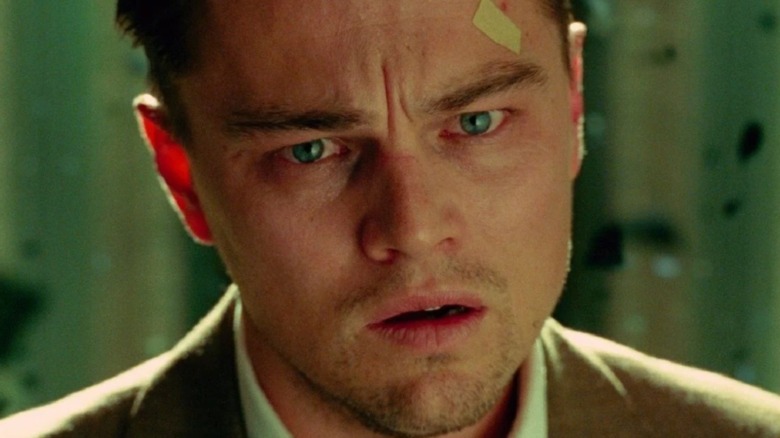
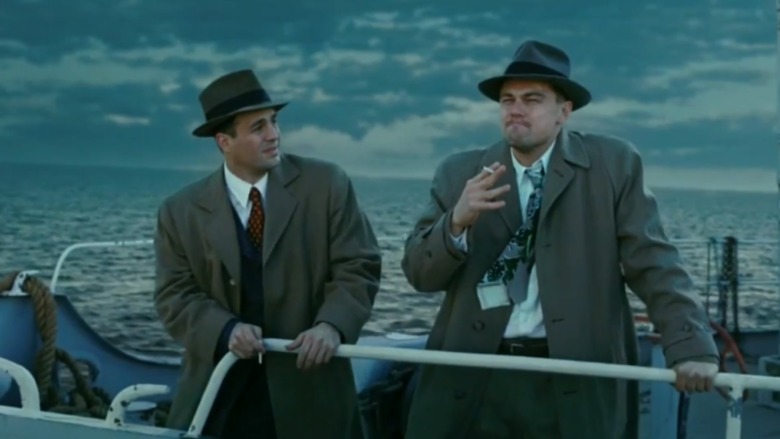
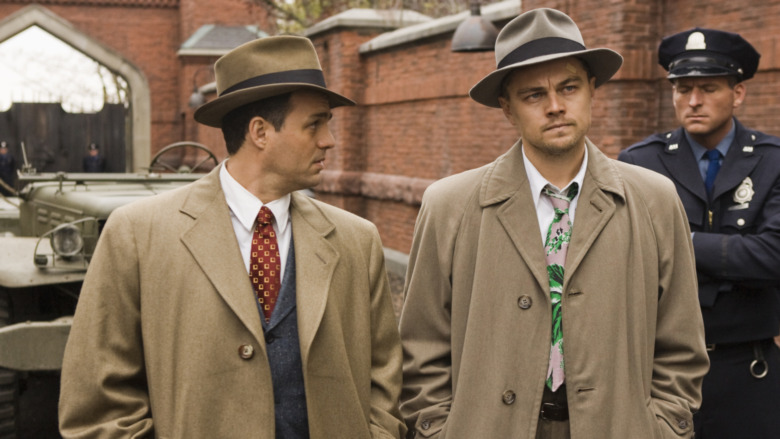
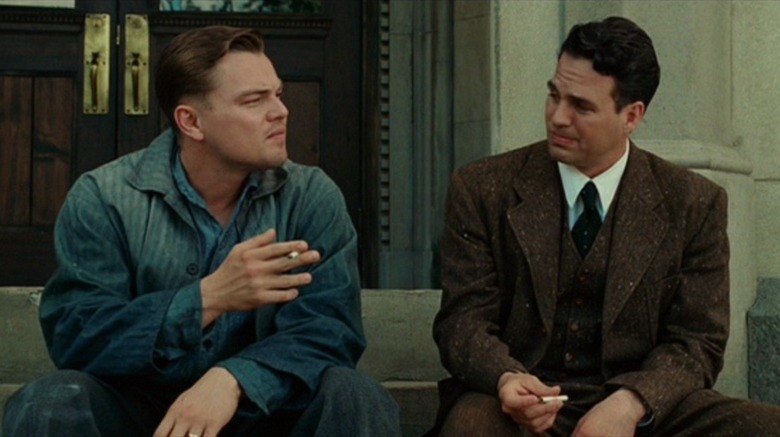
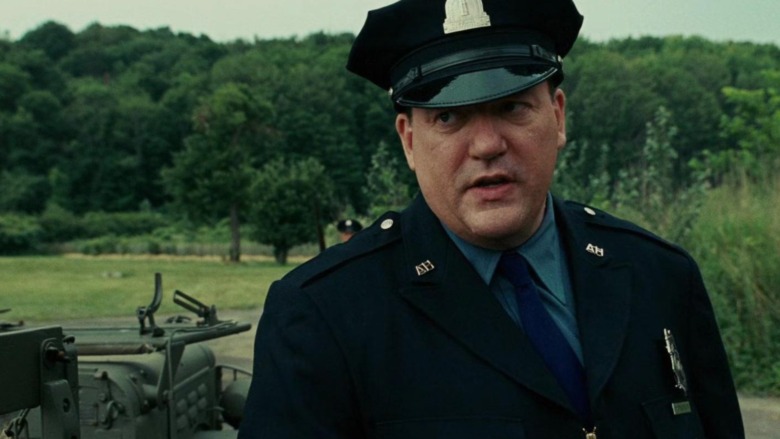
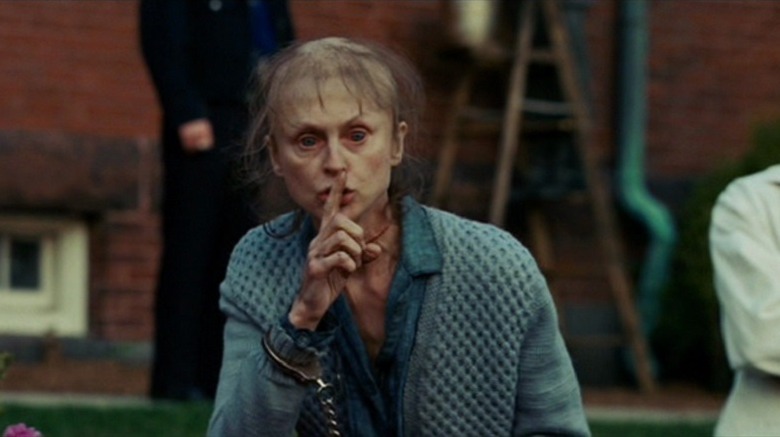
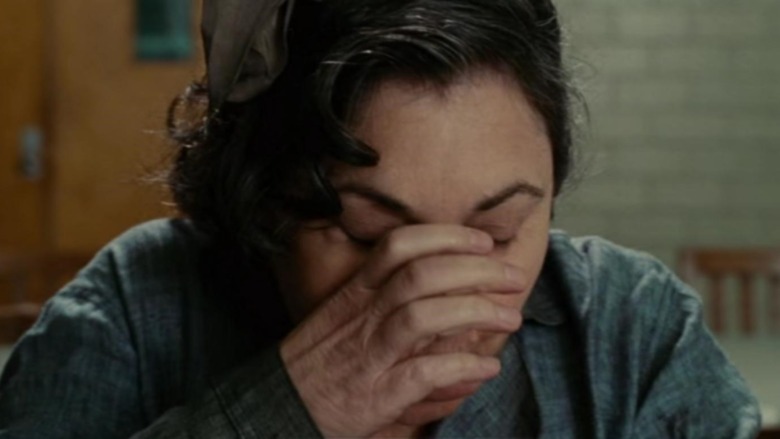
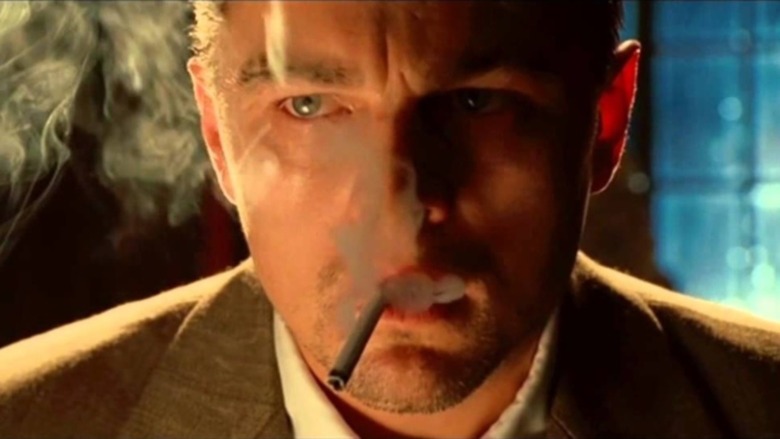
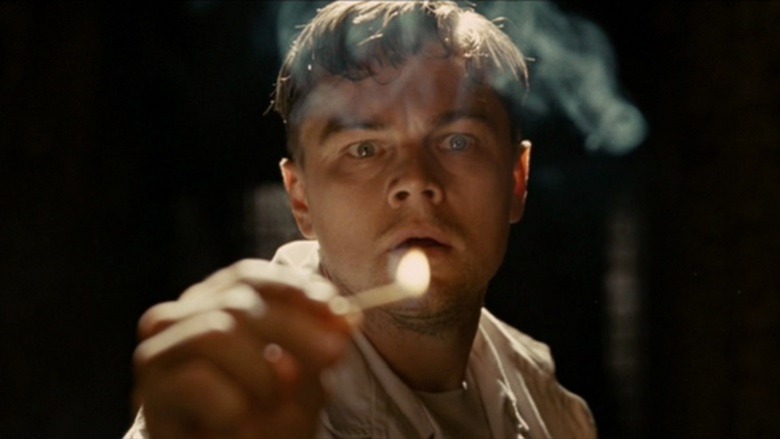
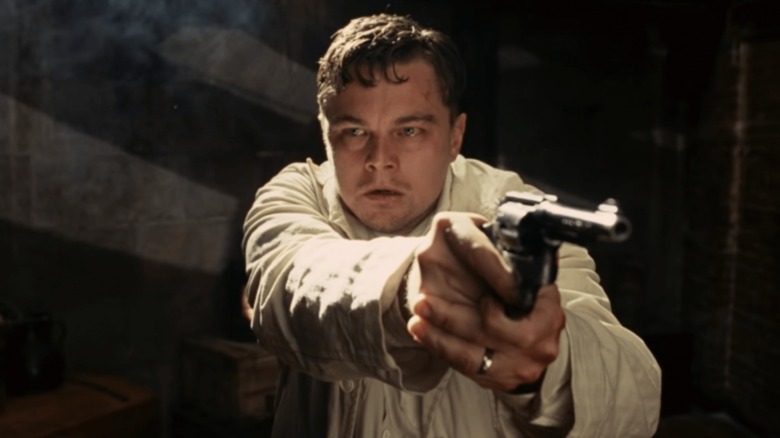
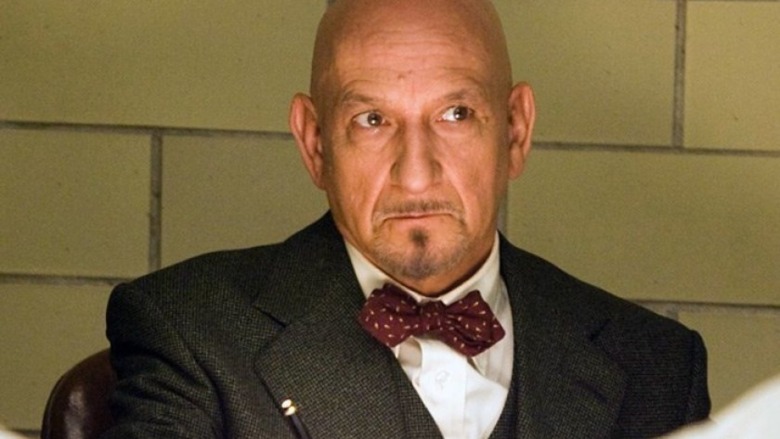
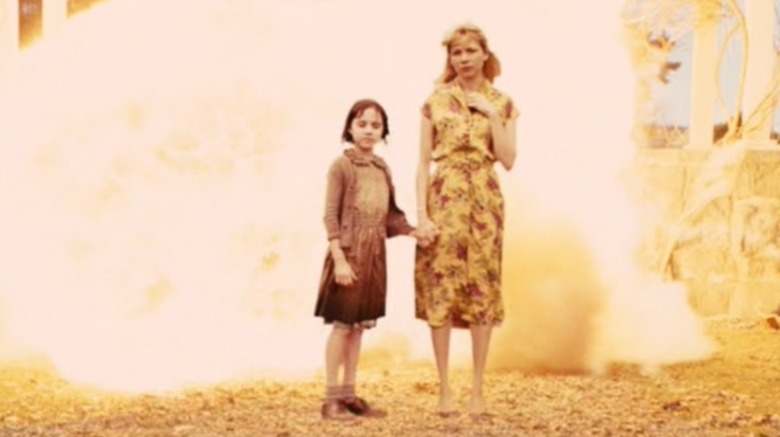
Belum ada Komentar untuk "Shutter Island So Tell Me Again"
Posting Komentar